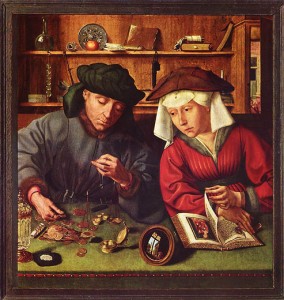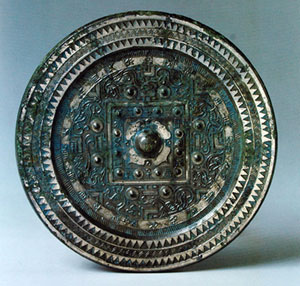Was mich an meinem Studienfach hält, ist eine Leidenschaft, sie sich am Besten in einem Erlebnis auf den Punkt bringen lässt, das mich tief beeinflusst hast.
Ich besuchte 2004 die MoMa-Ausstellung in Berlin. Es gab eine lange Schlange, die Neue Nationalgallerie hatte ihre Kellerpforten geöffnet damit sich schaulustige Massen eine Nase voll Freiheitsstatue ziehen konnten. Alles in allem also kein Event, auf den ich sonderlich scharf gewesen wäre. Ich glaube, ich bin mit irgendeiner Gruppe dann doch hingegangen. Ich fand die Räume ungemütlich, die Werke waren oft zu groß für das Parkhaus au „van der Rohe“, oder zu klein und versanken darin. Felltassen, Dalí, Matisse, nackte Leiber in groben Strichen gähn, jaja. Die Moderne war irgendwie nicht so mein Ding, damals fand ich Japonismus eher interessant, plakative Werke beruhigten mein adoleszentes Gemüt eher; die Moderne war mir immer schon etwas zu laut, zu aufgeregt. Ich lief also völlig reizüberflutet an den marktschreierischen Schinken vorbei, entnervt von den Menschenmassen, ermüdet und vor allem enttäuscht von mir selber: Nun redete ganz Berlin von dieser unglaublich guten MoMa-Ausstellung, aber ich konnte dem ganzen wenig Positives abgewinnen. Wie sollte ich jemals wieder von mir behaupten können, dass ich Kunst mag, wenn ich doch als so ein maulender Banause in dieser einmaligen Gelegenheit umherschlurfte? Die großen Namen zogen an mir vorbei- kein Gemälde rief irgendein Feuer in mir wach, ich war deprimiert. Das soll’s gewesen sein?, dachte ich oft bei mir. Warum wird da so ein Brimborium gemacht? Man erkennt doch nix. Ich konnte keine meiner leidenschaftlichen Argumentationen aus dem Kunst-Unterricht in der Schule mehr nachvollziehen. Wurde aus mir gar ein von mir selbst verhasster Moderne-Muffel? Ein „Das hätt ich auch gekonnt“-Schreier?
Eines der wenigen Werke, die mir immer präsent geblieben sind, hing ziemlich unspektakulär neben einer der Glas-Flügeltüren, ob Ein- oder Ausgang, weiß ich nicht mehr genau. Es gab keine Sitzgelegenheit davor, und auch ich war zuerst einfach daran vorbeigegangen. In meinem Selbstzweifel in einen bequemen Trott gefallen, schaffte dieses Bild mich jedoch hervorragend ein-und abzufangen. Letztendlich, so meine Erinnerung mich nicht trügt, verbrachte ich dann den Rest der Zeit vor diesem beruhigenden Pool des Glücks.
Es war ein Yves Klein- genauer das Monochrome Bleu, das Pigment, dass er sich als International Klein Blue patentieren ließ.


